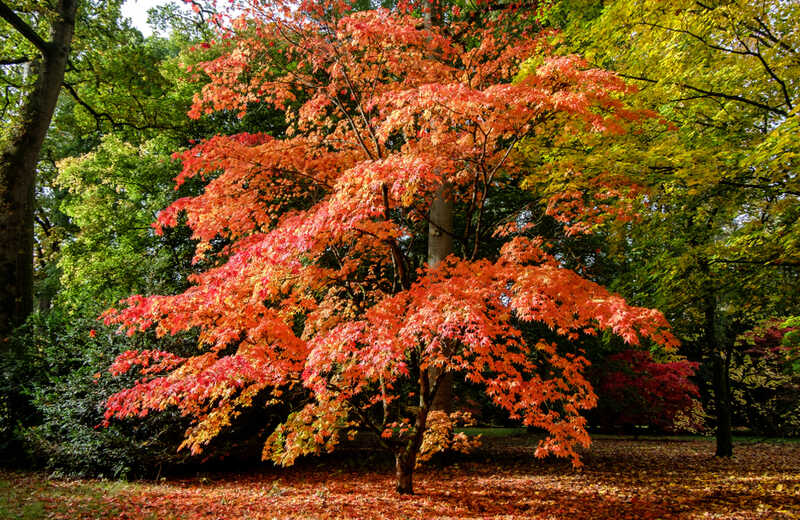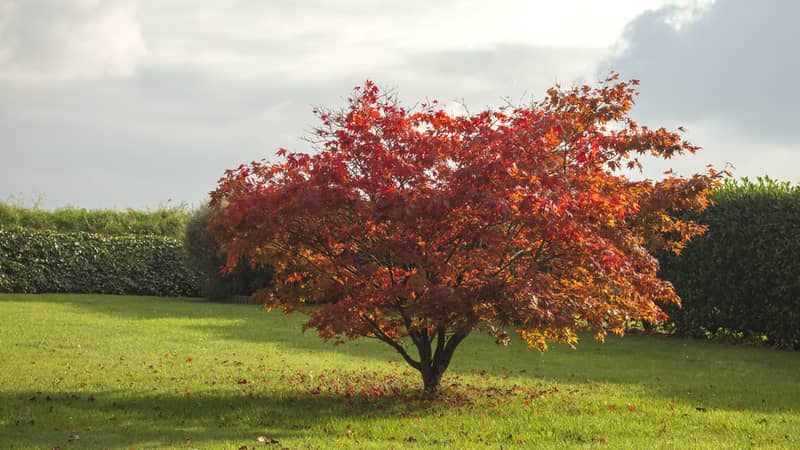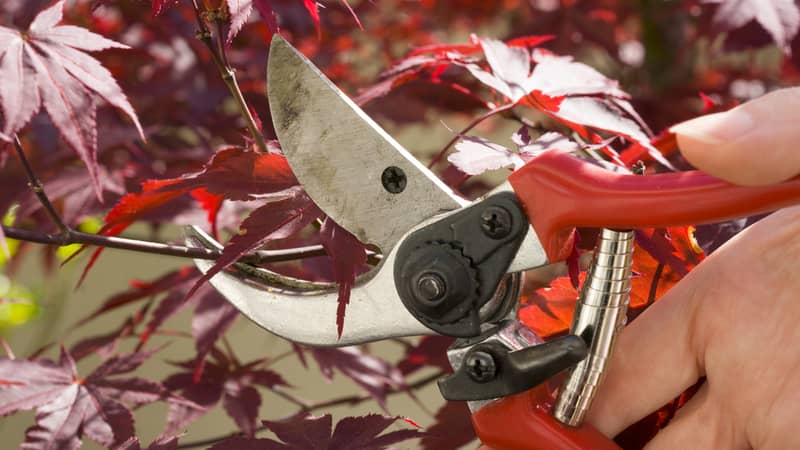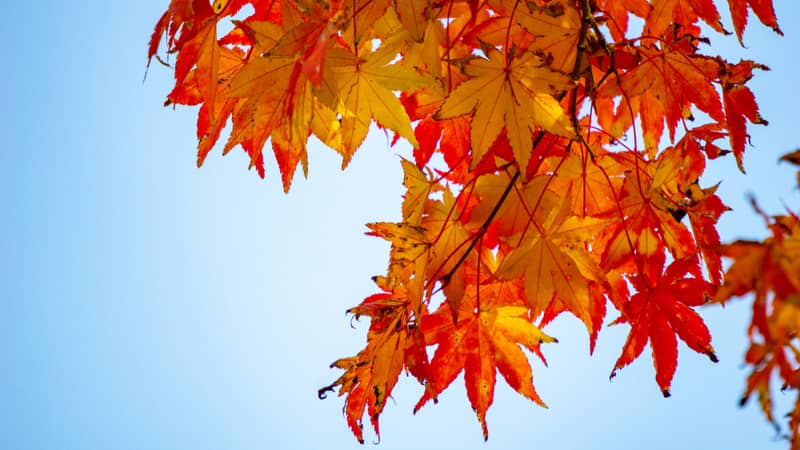Are you head over heels for the colours of autumn? If so, you’ll love the Japanese maple tree. These popular plants have stunning, bright crimson foliage in autumn, making them a gorgeous focal point.
Japanese maple trees (Acer palmatum) are fairly simple to care for. They like full sun, although they also appreciate afternoon shade and protection from strong winds. They thrive best in cold temperate climates. Japanese maples should have medium moist soil while establishing themselves, but do not waterlog the soil.
Ready for some autumn colour? Here’s how to grow and care for a Japanese maple tree and get that brilliant, bright crimson foliage that so many of us love.
About the Japanese Maple
The Japanese maple (Acer palmatum) is a deciduous tree that changes with the seasons. In spring, you’ll have reddish-purple flowers as the tree blooms. Then in summer, the lacy foliage turns deep burgundy or green. Many Japanese maples even have variegated foliage.
Following that, the stunning, vibrant leaves put on a show of autumn colour. In winter, the bare tree form becomes its own striking feature.
Most Japanese maples have similar tree structures, with a short, stout trunk and widespread branches. They also have the same leaf shapes – a maple form with leaf tips radiating from the centre.
Acer palmatum grows to a height of about 5.0m, making it perfect for small gardens. The dwarf varieties reach a maximum height of about 2.0m.
In Japan, this tree is commonly called Momiji.
Japanese Maple Growing Conditions
Acer palmatum trees are generally low-maintenance and hardy, but it’s good to know how to create an environment in which they thrive. This way, you’ll get the most brilliant shade of orange-red when autumn rolls around!
Soil
Your Japanese maple tree will like slightly acidic, well-drained soil that is consistently moist. Their original habitats had deep soil and consistent rainfall, so try to replicate that!
Mulch helps trap moisture, so you can water less frequently if you layer the ground with organic matter (e.g. fallen leaves) or well-composted manure.
Avoid clay soils that retain moisture, since this could cause waterlogged roots.
Sunlight
Acer palmatum likes full sun with protection from strong afternoon light. However, it can tolerate up to partial shade. Just know that less sun means a less brilliant autumn colour!
Climate
Japanese maples are very hardy, and can tolerate winter temperatures of as low as –10ºC. They’ll also survive any late spring frosts. In general, a cold winter actually improves the colour of their foliage.
Conversely, though, this tree does not like dry weather. This is because its delicate leaves can scorch easily, especially “Dissectum” varieties, which have finely-cut leaves. If you live in a warmer region, layer the ground underneath with stones to help keep the soil cool.
Watering
Young trees need consistent moisture to establish themselves. When trees reach a mature size, they can tolerate some drought, so you can let the top 5.0–10.0cm of soil dry out in between waterings. Don’t let the soil dry out completely, however – the roots won’t like that!
If you’re apprehensive about watering your Japanese maple, a garden care service can help you out and ensure your tree is always at peak health.
Pruning
Japanese maples need little pruning for maintenance, besides removing any dead or diseased branches. You can trim the canopy to keep a particular shape. Inspect the tree in winter to check for deadwood.
How to Grow Japanese Maple
Growing Japanese maples from seed is straightforward! Collect the samaras (seed pods) from the tree once you notice they’ve started to fall. Break the “wings” off the pods and soak the seeds in lukewarm water for 24 hours.
Collect all the seeds that sink to the bottom – the floaters aren’t viable. Fill a seed tray with a starter medium about 2.0cm high, and layer the seeds about 10.0cm apart. Cover with another 1.0cm of soil and lay a mesh screen on top.
Let the tray sit in a cold, partially-shaded space – ideally outside. Keep the soil moist but not wet while waiting for the seeds to germinate. You’ll start to see sprouts in the spring.
Once the seedlings have emerged and grown true leaves, you begin hardening your seedlings. Set them outside in a protected area for a short period of time, then start extending that time over the next few days. Once your seeds can stay outside for a full eight hours, they’re ready for transplanting.
Dig a hole twice as wide and the same depth as the root ball. Tease any tangled or curled roots, then place the plant in the ground. Backfill the soil and gently firm it down. Water well to settle the soil.
Japanese Maple FAQ
If you want to know more about your Acer palmatum, here are some answers to questions you might have!
How much sunlight do Japanese maples need?
Your Acer palmatum likes full sun, but make sure to keep it protected from the afternoon light. Some Japanese maples – especially those with variegation – are prone to leaf scorch, especially in the growing season.
Is Japanese maple prone to root rot?
Yes, it is. Japanese maples need moist soil, but too much moisture – especially if the roots are soaked – leads to rot. Do not waterlog your tree.
Do Japanese maples cause structural damage?
Generally not – the trees won’t grow big enough to threaten any structural integrity. They also have compact roots, so there’s little worry about them reaching underground pipes. For this reason, they’re popular even in city homes.
Does a Japanese maple tree grow fast?
Nope! Acer palmatum is a slow-growing tree, which makes it great for a compact garden.





